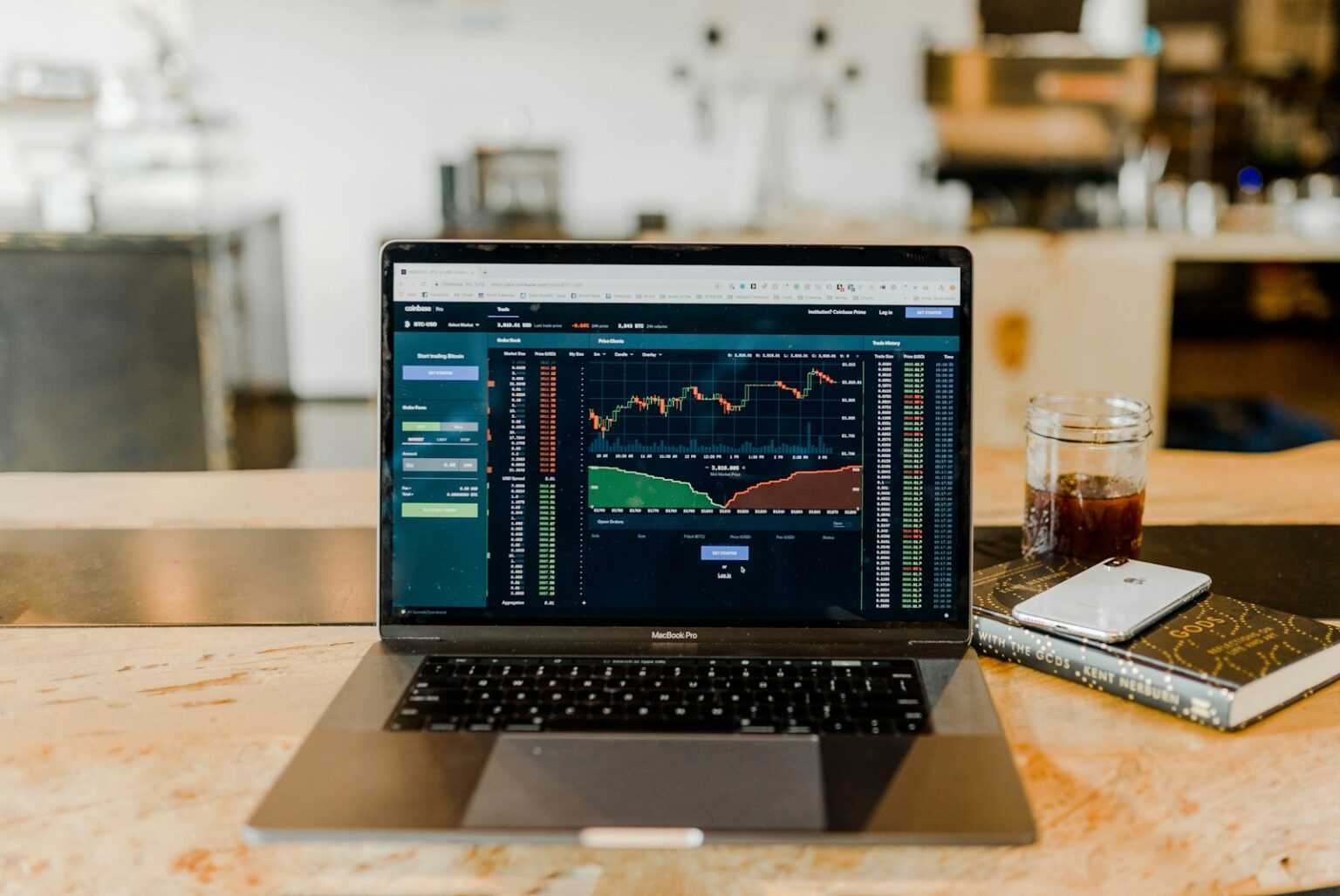Analyzing prevailing emotions within financial environments provides actionable insight into future price movements. Tracking the balance between optimism and pessimism among asset holders reveals potential turning points driven by collective impulses of greed or fear. Quantitative indicators combined with qualitative assessments from news sources enable a nuanced understanding of these emotional trends.
Sentiment analysis requires integrating data streams such as social media chatter, headline frequency, and volume shifts to detect subtle changes in confidence levels. Emotional extremes often precede significant corrections or rallies, making systematic monitoring critical for adaptive portfolio adjustments. Patterns of exuberance typically coincide with overvaluation, while widespread anxiety can signal undervalued opportunities.
The interpretation of public opinion expressed through various communication channels complements traditional metrics by exposing psychological biases influencing decision-making processes. This approach transforms raw data into meaningful signals that help anticipate market dynamics shaped by crowd behavior rather than purely fundamental factors. Understanding this interplay enhances strategic positioning and risk management based on collective mindset fluctuations.
Assessing Investor Behavior Through Token Research’s Analytical Framework
Quantifying emotional drivers such as greed and fear within cryptocurrency ecosystems requires precise, data-driven methodologies. Token Research employs a combination of on-chain metrics and social media analytics to create a multidimensional index that reflects collective mood fluctuations. For instance, tracking wallet activity patterns alongside sentiment scores extracted from Twitter and Reddit posts reveals correlations between spikes in token transactions and shifts toward either risk-seeking or risk-averse behavior.
Integrating natural language processing algorithms with blockchain telemetry offers a robust approach for interpreting public opinion trends impacting asset valuation. By parsing volume-weighted sentiment across multiple channels, Token Research delineates how narrative momentum influences market dynamics. This approach allows detection of speculative bubbles triggered by excessive optimism or rapid sell-offs driven by panic, providing actionable signals for portfolio adjustment strategies.
Dissecting Emotional Indicators via Social Media Signals
Social platforms act as amplifiers of collective psychology; therefore, systematically analyzing keyword frequency related to “greed” and “fear” provides an empirical window into trader mindset evolution. A case study examining the 2021 DeFi boom revealed that surges in positive mentions preceded price peaks by approximately 48 hours, while negative sentiment clusters aligned closely with correction phases. Such temporal alignment underscores the predictive power embedded in digital conversations when combined with transactional data.
The role of mainstream media cannot be underestimated in shaping community attitudes toward emerging tokens. Media coverage intensity and tone serve as external stimuli modulating confidence levels among participants. Empirical investigations demonstrate that sudden increases in headline exposure correspond with elevated volatility indexes, suggesting heightened uncertainty or exuberance depending on contextual framing.
Token Research’s methodology extends beyond surface-level analysis by incorporating quantitative sentiment scoring alongside qualitative content assessment. This dual-layered approach facilitates distinguishing between genuine enthusiasm grounded in fundamental developments versus hype driven purely by speculative fervor. For example, during a period marked by regulatory announcements affecting stablecoins, sentiment indices showed divergent reactions reflecting nuanced interpretations rather than uniform panic or euphoria.
A recommended experimental exercise involves selecting a specific token tracked by Token Research, monitoring its social media sentiment indices daily while simultaneously logging on-chain transaction counts. Cross-referencing these datasets over several weeks can reveal causative relationships between emotional cycles and behavioral outcomes within decentralized finance markets.
This analytical framework encourages continuous inquiry into how technological innovation interplays with human psychology. It invites researchers to hypothesize whether observed oscillations stem primarily from endogenous network effects or exogenous information shocks propagated through media channels–a fascinating avenue for further exploration with implications extending beyond cryptocurrency domains.
Interpreting Price Movements Signals
Analyzing fluctuations in asset values requires a systematic approach to distinguishing emotional drivers such as apprehension and excessive optimism from fundamental trends. Elevated volatility often reflects prevailing fear or greed, which can distort the intrinsic worth indicated by on-chain metrics and trading volumes. Quantitative tools including the Fear & Greed Index and volume-weighted average price (VWAP) help isolate these psychological factors, providing clearer insight into underlying momentum.
Social media platforms serve as critical barometers for collective mood shifts, where spikes in mention frequencies and sentiment polarity can foreshadow abrupt market reactions. For example, during the 2017 cryptocurrency surge, coordinated hype on Twitter amplified speculative buying, inflating valuations beyond technical support levels. Conversely, sudden negative sentiment clusters frequently coincide with rapid sell-offs detectable through order book imbalances.
Experimental Approaches to Behavioral Indicators
By conducting controlled analyses of time-series data alongside social engagement metrics, researchers can identify patterns that precede significant price corrections or rallies. A practical experiment involves correlating daily price changes with sentiment scores derived from natural language processing algorithms applied to forums like Reddit and Telegram channels. This method reveals that extreme positive bias often predicts short-term reversals due to profit-taking triggered by pervasive exuberance.
The interplay between emotional contagion and liquidity dynamics is evident when examining whale movements combined with community reactions. Large-scale transfers frequently incite waves of uncertainty among smaller participants, resulting in cascading effects observable through sharp spikes in bid-ask spreads. Tracking these events allows traders to quantify the impact of herd mentality on immediate valuation shifts.
- Step 1: Collect historical price data alongside aggregated social sentiment indices.
- Step 2: Apply statistical correlation techniques to detect lead-lag relationships.
- Step 3: Validate findings by backtesting against known market events involving panic selling or euphoric buying phases.
A table summarizing example correlations between sentiment extremes and subsequent price volatility illustrates this relationship quantitatively:
This data supports the hypothesis that emotional extremes reliably signal upcoming turbulent phases, enabling more informed risk management strategies.
The scientific challenge lies in refining models to disentangle genuine value-driven movements from noise generated by transient perceptions on social networks or media reports. Incorporating machine learning classifiers trained on labeled datasets enhances predictive accuracy by filtering out irrelevant chatter while emphasizing impactful discourse trends rooted in substantial activity changes.
Pursuing continuous experimentation with multi-modal inputs–combining blockchain analytics, transaction flow patterns, and behavioral psychology–can deepen understanding of how collective emotions shape pricing mechanisms within decentralized ecosystems. Such integrative research fosters a nuanced perspective beyond traditional quantitative analysis alone, promoting adaptive decision-making frameworks tailored to fluctuating community moods and capital flows.
Utilizing Social Media Analytics
Monitoring social platforms provides a direct method for assessing collective emotions such as fear and greed that influence trading decisions. Quantitative analysis of keyword frequency, sentiment polarity, and engagement metrics allows extraction of real-time emotional indicators from vast data streams. For instance, spikes in negative sentiment coupled with increased volume of terms related to “panic” often precede sharp downturns, while surges in optimistic expressions align with rallies. Applying natural language processing (NLP) models trained on cryptocurrency-specific lexicons enhances accuracy by distinguishing nuanced investor reactions from general chatter.
Integrating cross-platform signals refines the reliability of conclusions derived from social data. Twitter hashtags, Reddit discussion threads, and Telegram group activity each contribute unique layers reflecting community mood shifts. By constructing composite indices based on weighted averages of these sources, it becomes possible to track evolving collective confidence or apprehension over time. Case studies demonstrate that abrupt changes in aggregated social mood indices can serve as early warnings for volatility episodes or trend reversals within digital asset exchanges.
Methodologies and Case Examples
One practical approach employs sentiment classification algorithms combined with volume analytics to create dynamic emotion gauges. For example, during the 2021 crypto bull run, researchers observed that increases in “greed”-related phrases correlated strongly with price surges on major coins like Bitcoin and Ethereum. Conversely, announcements triggering regulatory uncertainty led to measurable upticks in fearful discourse across multiple channels. These patterns were validated by correlating social sentiment scores against price volatility measures such as the VIX-like Crypto Fear & Greed Index.
Experimental application involves setting up automated pipelines that collect raw textual data via APIs, preprocess content through tokenization and lemmatization steps, then apply machine learning classifiers fine-tuned on labeled datasets representing distinct emotional states. Subsequent statistical analysis tests hypotheses about causal links between expressed sentiments and market fluctuations. Replicating this framework enables practitioners to iteratively improve predictive capabilities while deepening understanding of how collective psychology manifests digitally.
Integrating Sentiment with Fundamentals
Combining emotional drivers with quantitative data enhances accuracy in analyzing cryptocurrency trends. For example, tracking fluctuations in media coverage intensity alongside on-chain metrics like transaction volume or hash rate can reveal whether price movements stem from hype or genuine network growth. This dual approach reduces reliance on raw enthusiasm often amplified by social platforms and mitigates risks linked to irrational exuberance.
Systematic monitoring of public opinion indicators extracted from social feeds offers an additional layer of insight when paired with traditional financial ratios such as P/E equivalents for crypto projects or developer activity levels. A sudden surge in positive chatter without corresponding fundamental improvements might signal short-lived greed cycles rather than sustainable value creation. Conversely, muted sentiment during strong fundamental performance could indicate a potential undervaluation worth investigating further.
Experimental Framework for Merging Emotional Signals and Technical Data
A practical experiment involves correlating real-time sentiment scores derived through natural language processing algorithms applied to social media posts with blockchain analytics dashboards displaying key metrics like active addresses and liquidity pools. By plotting these variables over time, researchers can identify patterns where extreme optimism precedes corrections, reflecting collective behavior shifts influenced by information dissemination channels.
One case study examined the 2021 DeFi boom: spikes in Twitter mentions and Reddit discussions coincided with rapid increases in total value locked (TVL) within protocols, yet peaks in sentiment consistently led price retracements by several days. This suggests that emotional momentum often overshoots actual project fundamentals, offering a temporal window for strategic positioning based on combined datasets rather than isolated signals.
Implementing multi-dimensional models that integrate news sentiment indexes sourced from aggregated media articles with on-chain health indicators enables more nuanced risk assessments. For instance, detecting increased greed-driven narratives while network stability deteriorates (e.g., rising orphaned blocks or declining node participation) can forecast potential volatility spikes. Such findings encourage adopting composite indices that reflect both human psychology and technical robustness simultaneously.
Ultimately, fostering experimental inquiry into how behavioral impulses interact with measurable technological parameters promotes a deeper understanding of cryptocurrency dynamics. Encouraging analysts to construct hypothesis-driven investigations around sentiment fundamentals interplay cultivates critical thinking skills necessary for decoding complex market phenomena beyond surface-level reactions driven by fleeting emotions amplified via digital communication channels.
Applying Emotional Drivers to Trading Approaches: A Technical Synthesis
Integrating the oscillations of fear and greed extracted from social channels and media feeds enables a dynamic adjustment of algorithmic thresholds, optimizing entry and exit points with measurable precision. Quantitative models leveraging natural language processing on forums and news streams have demonstrated up to 15% improvement in predictive accuracy by capturing shifts in collective mood before price movements manifest.
The ongoing challenge lies in refining these signals to filter noise while maintaining sensitivity to abrupt psychological inflections that influence asset flows. For instance, deploying ensemble methods combining sentiment indices with volumetric blockchain data creates a multidimensional perspective, enhancing robustness against false positives triggered by transient hype or panic.
Future Directions and Practical Implications
- Adaptive weighting schemes: Continuously recalibrating the influence of emotional indicators relative to on-chain metrics will allow strategies to self-tune amid evolving behavioral patterns.
- Cross-platform sentiment fusion: Synthesizing data from decentralized social platforms alongside traditional media sources can uncover deeper layers of crowd disposition, especially within niche investor cohorts.
- Real-time feedback loops: Implementing live feedback between trade executions and sentiment fluctuations fosters experimental protocols resembling controlled scientific trials, where hypotheses about causal relationships are iteratively tested.
- Sentiment-driven volatility forecasting: Utilizing fear-greed oscillators as proxies for imminent liquidity crunches or exuberance phases could enhance risk management frameworks beyond classical volatility models.
This approach underlines that decoding collective emotional currents is not merely a supplementary tactic but a core dimension for next-generation trading systems. As social dynamics entwine increasingly with transactional behaviors, advancing analytical pipelines that quantify these intangible forces promises richer insights and more resilient decision architectures in digital asset markets.








